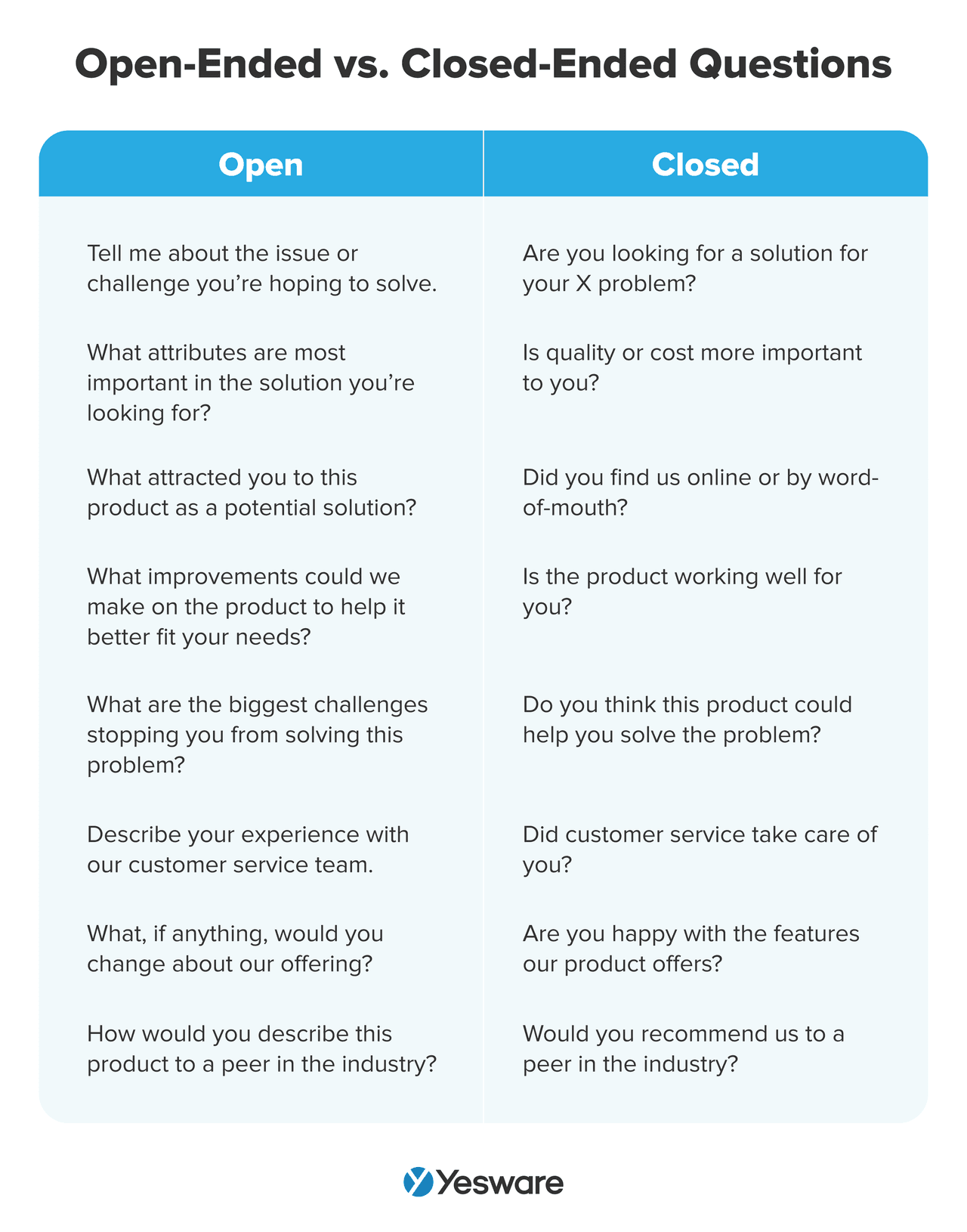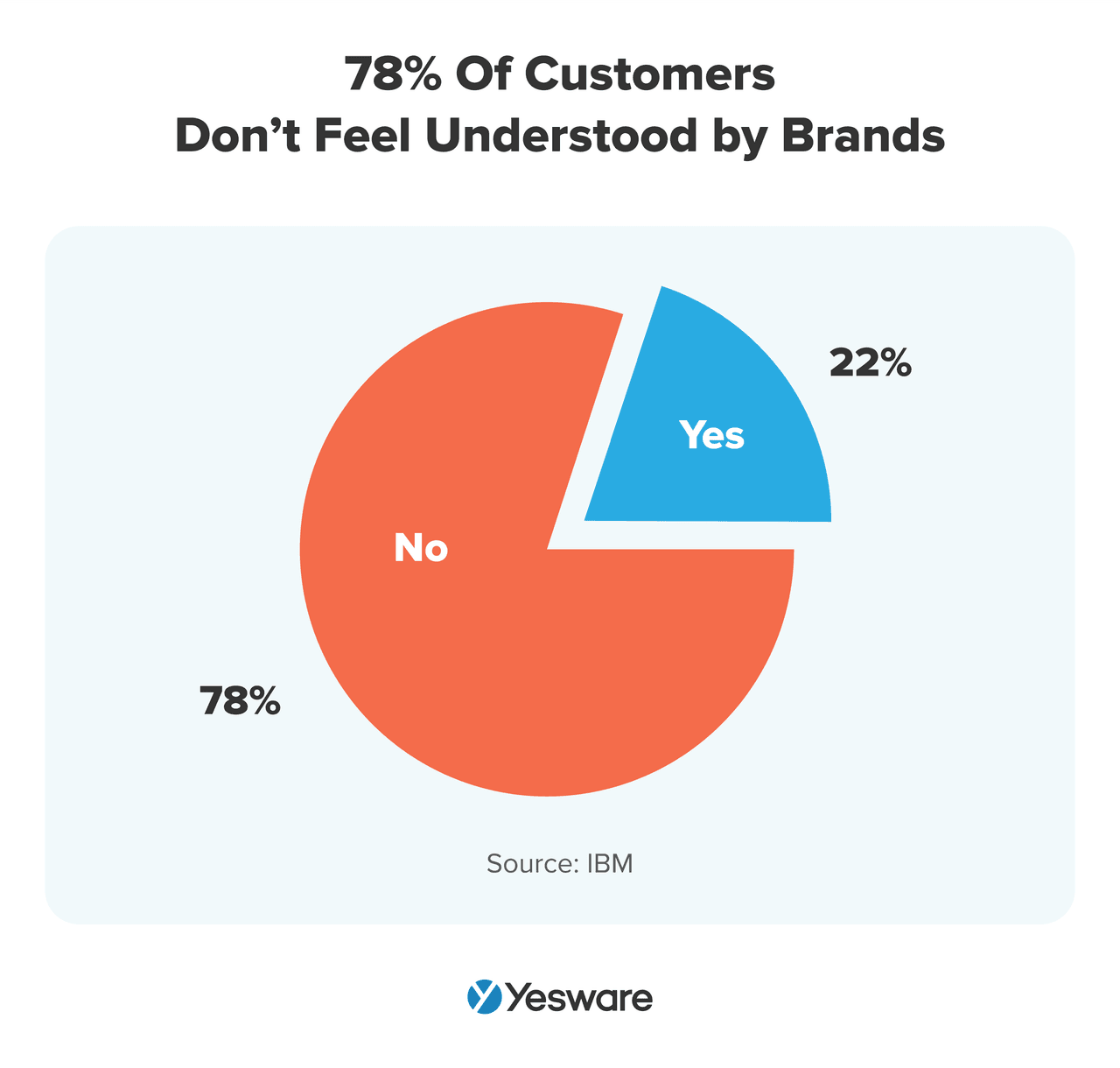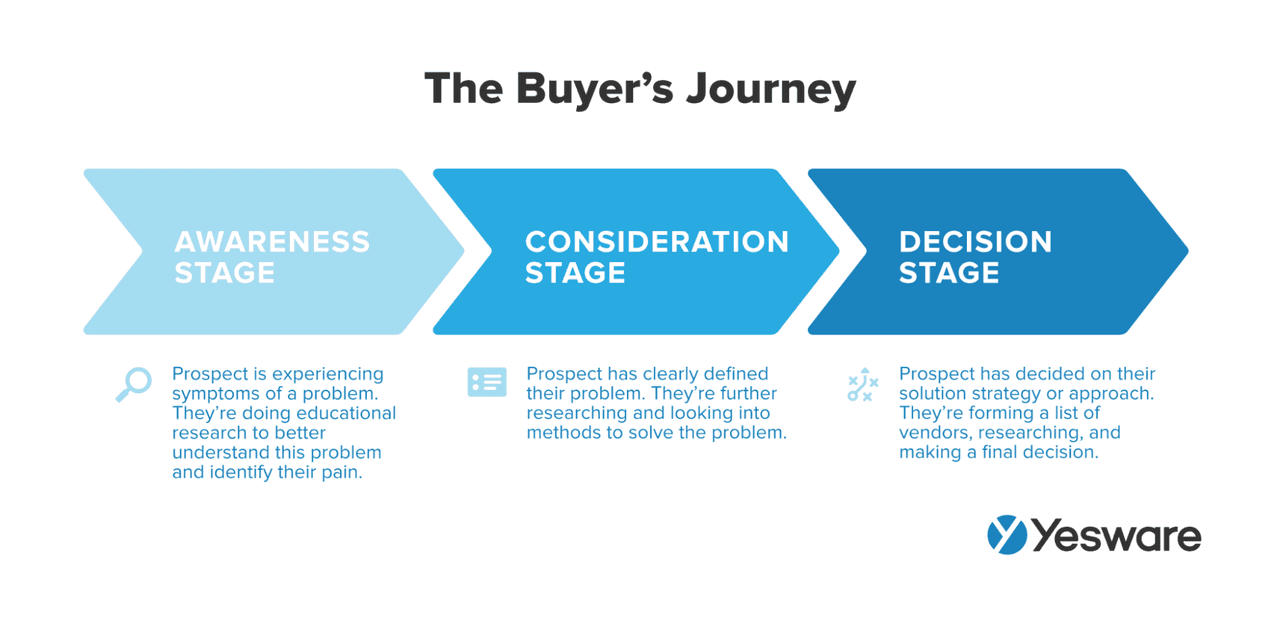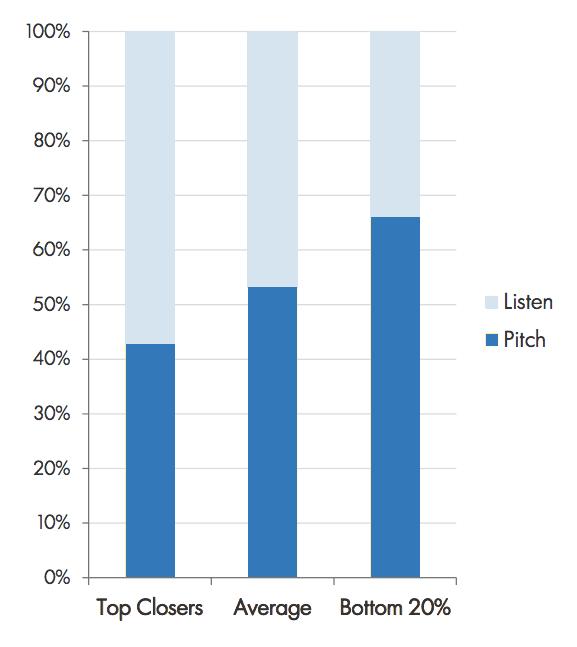20 Open-Ended Sales Questions That Spark Conversation
Open-ended sales questions are an essential factor of all successful sales strategies.
Top sales professionals know that the key to a successful discovery call is to center the conversation around the prospect, their pain points, and how your solution will help them – this is done by asking questions.
But are you asking your prospects the right questions?
You want to avoid all questions that can be answered with a “yes” or a “no.” Your goal is to ask open-ended sales questions that involve in-depth explanations so you can grasp as much information as possible to tailor your sales pitch around the prospect and their unique pain points.
In this article, we look at 20 examples of open-ended questions for sales, why they work, and what to listen for to drive results.
Here’s what we’ll cover:
- What Are Open-Ended Sales Questions?
- Open-Ended vs. Closed-Ended Questions
- 20 Examples of Open-Ended Sales Questions
- Tips for Asking Open-Ended Questions in Sales
- FAQs
What Are Open-Ended Sales Questions?
An open-ended sales question is a question asked by a sales professional to a prospect/buyer that requires more than a one-word response; these questions prompt longer and more detailed responses. Open-ended questions can’t be answered with a “yes” or a “no.”
These types of questions are super important in sales conversations. Why? They allow sales professionals to better understand their prospects by uncovering pain points, identifying interests, and gaining visibility into the company.
These questions also result in healthy dialogue that builds rapport and drives better discussions.
Remember, people love talking about themselves (it’s proven). By getting your prospect to talk about themself, they’ll instinctively look back on the conversation in a more positive light. And at the same time, you’re gaining valuable information. It’s a win-win.
Open-Ended vs. Closed-Ended Questions
When talking to prospects, you want to steer away from closed-ended questions. Why? They’re less likely to drive the conversation forward.
Let’s look at some open-ended vs. closed-ended questions to better understand the difference. 
20 Examples of Open-Ended Sales Questions
Rapport Building Open-Ended Questions
Building rapport is crucial in buyer conversations. As the old saying goes, “people buy from people they like.” If you start your conversation off on the right foot, you’ll significantly improve the outcome of the meeting. Here are some examples.
1. What will make this a successful meeting for you?
At the beginning of your meeting, you can immediately stand out by asking the prospect for their thoughts on how they’d like the meeting to go.
Make sure to jot down what they say and cover all points brought up. That way, you’re focusing the call around what your prospect wants to talk about, not you.
2. I’d like to discuss X, Y, and Z areas. Before we get started, what else would you like to cover in this meeting?
Another way you can communicate prioritizing the prospect’s needs over your own is by giving them a quick rundown of the topics you’ll be discussing and then asking if there are any additional areas they’d like to cover.
This sets the stage that right off the bat you’re already looking for their input and intake on the meeting structure – which gives you a leg up.
3. What drove you to take this call with me?
This open-ended question helps you to better understand the prospect and what their main driving factor is.
Now, make sure you successfully cover whatever it is that prompted them to talk to you in the first place. Make the meeting worth it. Provide value. Focus on their needs.
4. I saw you downloaded our ebook, what motivated you to seek these findings?
If the prospect you’re talking to has downloaded a guide in the past — use this to your advantage!
Gain insight into why they downloaded the ebook and what they were looking to obtain/learn from your findings. You’ll not only spark conversation but identify points of interest that you can leverage down the line.
Open-Ended Sales Questions to Better Understand the Prospect & Company
Studies show that 78% of customers don’t feel understood by brands. That’s why it’s important for you to leverage open-ended questions to better understand your prospect and their company.
Use the examples below to dig deeper into the prospect and company’s priorities and goals.
5. Walk me through your typical day-to-day activities in your role.
The more you understand what your prospect does day-to-day, the better you can tailor your solution to fit their exact needs.
This question allows you to pinpoint where your product or service can come into play. For example, they schedule a lot of meetings and your solution helps with that? Mention it.
Later in the conversation, use their description to intertwine your product into the prospect’s day-to-day and how it can help them with certain tasks. Or use this question to lead into more tailored questions like – “how much time do you spend scheduling meetings per day?” — then respond how your solution will cut down these hours.
6. What are your company’s biggest priorities this year?
This open-ended sales question will give you better insight into the current state of your prospect’s business.
This is a heavy-loaded question that will get your prospect discussing multiple points of focus where your solution can help.
7. What are your team’s current goals?
How can your solution help the team be more productive and drive better results?
Identify where your solution can bring value. Emphasize that you want to help them accomplish their goals and prove why your product/service can help them get there.
8. How do you see your company growing in the next year?
It’s important to gain insight into the roadmap of the company you’re selling to so that you can ensure a long-term partnership, not a short-term solution.
Now, you can position your offering as a long-term solution based on the company’s predicted growth.
9. What results would you like to see with your ideal solution?
Hear directly from the prospect what results they’d like to see. Then, demonstrate how your product/service can help them deliver these results.
Do you have case studies that show customers achieving similar results? Mention it. Tailor your offering around these specific numbers and prove how your solution will drive these results for the team.
Open-Ended Sales Questions to Uncover Pain Points
The only way you can solve the buyer’s problem is to uncover their pain points. By identifying the biggest challenges your prospective customers face, you can position your product or service as the solution. Take a look at the examples below.
 10. How have you tried to accomplish [results mentioned in the answer above] in the past?
10. How have you tried to accomplish [results mentioned in the answer above] in the past?
Have they tried other solutions? What went wrong? This is another way of asking prospects what solutions they’ve tried in the past without directly asking for names.
If they mention a competitor – you know why your solution is better, discuss it.
Offer to share sales collateral such as a case study or testimonial of a similar company that switched from the same competitor to you. What outcomes did they see?
11. What challenges have you faced in the past when trying to solve these problems?
This is another way of asking the question above. Your prospect will discuss any solutions they’ve tried in the past and what went wrong.
You know the challenges they faced are ones they can’t run into again – prove why your solution avoids those same challenges and why it will be different this time.
12. What’s prompting you to do something about this now?
It’s important to gather insight into the business’ timeline and why they’re initiating this change now.
Did something specific happen that prompted them to act now? Did they get budget approval? Is their business growing? Have they shifted focus? This is an important aspect to identify.
13. What’s holding your team back from achieving your goals?
This is where you can identify any roadblocks. What’s getting in the way of the team achieving their goals – can your solution help overcome these obstacles?
From this point forward, tailor your questions around these specific goals and how elements of your solution will help the team reach their goals faster.
14. You mentioned frustration around X. Can you elaborate?
In case you get a closed-ended answer, this follow-up question gets the prospect to elaborate more on the pain point mentioned.
Not every prospect will fully dive into topics they’ve discussed. By asking the prospect to explain more about a certain frustration, you can uncover more aspects of the problem.
Open-Ended Questions to Better Understand The Buying Process
Open-ended sales questions can also help you better understand the buying process of your prospect and their company so that you can enhance the buyer’s journey and speed up the sales process. The questions below peel back more layers of what needs to be done to reach a purchase.

15. What steps do you need to take in order to make a decision and purchase your chosen solution?
This question is another way of asking how their decision-making process works.
To avoid any sales objections from arising later in the sales process, this is an important question to ask. The buying process differs between companies – understanding the decision-making process early on will depict all future conversations going forward.
Another important element this question brings to light is whether there are other stakeholders involved. The sooner you can identify this, the sooner you can get those decision-makers involved in the conversation.
16. When would you ideally like to implement a solution for the team?
What does their timeline look like? Are they looking to implement this solution in days, weeks, months, or years? If they’re looking to start at a later date – you can push on the urgency now.
It’s important to understand their timeline so you can act accordingly and forecast opportunities accurately.
17. How does your company evaluate new products/services?
Similar to the questions above, it’s helpful to gain knowledge on what needs to be done to get the ball moving.
Understanding not only what the team needs to do but the criteria of the company for such purchases gives you visibility into what needs to happen to move the deal forward.
Open-Ended Sales Questions to Gain More Insight
Here are some final questions you can ask prospects to gain final insight into their thought process and the overall mood on how the conversation went.
18. Which areas of our solution do you still have questions about?
It’s impossible to cover every aspect of your solution in one short call. Make sure you’re giving your prospect the time to ask questions.
The prospect’s answer will help shed light on areas of doubt. This is an important insight to gain before the end of the call.
19. What have I not covered that you’re looking to know more about?
This is another great way to get your prospect to ask questions.
You 1) help to avoid confusion with unanswered questions and 2) leverage what’s top-of-mind to your buyer.
20. What are you thinking for the next steps?
Allow the prospect to give their input on the next steps. By asking them for their thoughts first – you gather insight into how the call went for them, how urgent the situation is, and their level of interest.
After their opinion, you can suggest your own action items.
Tips for Asking Open-Ended Questions in Sales
Do Your Research
Make sure you’re asking the right questions.
You only have so much time to talk to your prospect — make sure you’re not wasting time asking questions that you can easily find online yourself.
Go into the call prepared. Know your target focus points and outcomes.
Listen More Than Talk
It’s human nature to want to talk about yourself, and most prospects will jump at the chance to talk about their business to someone who shows interest in listening. But it’s important that you’re actively listening.
In fact, studies show that in the most successful sales conversations, sales professionals speak 43% of the time and the prospect speaks 57% of the time.

You can show the prospect you’re actively listening by repeating points they made — this will communicate you’re genuinely interested to hear what they have to say.
This will help build trust and elicit an eagerness to move forward.
Make It Conversational
Remember, open-ended questions are meant to ignite conversation.
Don’t just run through your list of questions — respond to their answers and ask questions that have to do with their specific response. That way, it feels more like a conversation than a Q&A.
Ultimately, the more your sales calls feel like a conversation, the better the outcome.
Conclusion
Use these 20 open-ended sales questions to get prospects talking, build relationships, and ultimately close more deals.
There are tons of benefits of asking open-ended questions in sales — use them to your advantage.
Remember, getting your prospects to talk is a win-win. It not only helps you better understand your prospect but will increase the likelihood that the prospect looks back on the conversation in a positive light. Why? Because everyone likes talking about themselves.
Extra Guide on asking the right sales questions: How to Ask Probing Questions When Making a Sale.
Open-Ended Sales Questions FAQs
1. Why are open-ended sales questions important in sales?
They spark meaningful conversations, uncover pain points, and build rapport. By encouraging prospects to talk openly, reps can position solutions more accurately and create stronger trust, ultimately leading to higher close rates.
2. When should I use open-ended sales questions in a conversation?
Use them at the start of discovery calls, while probing for needs, and when clarifying objections. They’re most effective for uncovering details, understanding priorities, and keeping the buyer engaged throughout the sales cycle.
3. How do open-ended sales questions build rapport?
They show genuine interest in the prospect’s perspective. People enjoy talking about their business challenges and goals. By actively listening to their answers, reps demonstrate empathy and build trust faster than with transactional yes/no questions.
4. What are some examples of powerful open-ended sales questions?
Examples include: “What are your team’s biggest priorities right now?” or “What results would you like to achieve in the next quarter?” Yesware provides sales teams with template libraries that include proven open-ended discovery questions.
5. Can Yesware help me track open-ended sales questions?
Yes. Yesware integrates with Gmail and Outlook to log notes from sales calls directly into your CRM. Reps can track which questions resonate most with prospects and share successful approaches across the team.
6. How do I know if my open-ended sales questions are effective?
Effective questions generate detailed responses, uncover pain points, and keep prospects engaged. If conversations stall or answers are vague, refine your questions. With Yesware analytics, teams can see how open-ended approaches impact meeting outcomes.
7. Do open-ended sales questions work for cold calls?
Yes. Open-ended questions help turn cold calls into conversations. Instead of pitching right away, ask about priorities or challenges. This makes prospects feel heard and more open to continuing the dialogue.
8. How do I prepare good open-ended sales questions?
Research the prospect’s role, company, and industry. Then create questions tailored to their situation, such as “How is your team adapting to X trend?” Yesware templates and CRM integrations make it easier to prep with context.
9. Can open-ended sales questions shorten the sales cycle?
Indirectly, yes. By uncovering needs and objections early, reps reduce wasted time and focus only on high-potential opportunities. This leads to faster alignment between the buyer’s needs and your solution.
10. What are common mistakes when asking open-ended sales questions?
Common mistakes include asking overly broad questions, interrupting the prospect’s answer, or failing to follow up with probing questions. With Yesware reminders and note-taking, reps can stay consistent and ensure no critical detail is missed.
Get sales tips and strategies delivered straight to your inbox.
Yesware will help you generate more sales right from your inbox. Try our Outlook add-on or Gmail Chrome extension for free, forever!
Related Articles
Casey O'Connor
Anya Vitko
Anya Vitko
Sales, deal management, and communication tips for your inbox

